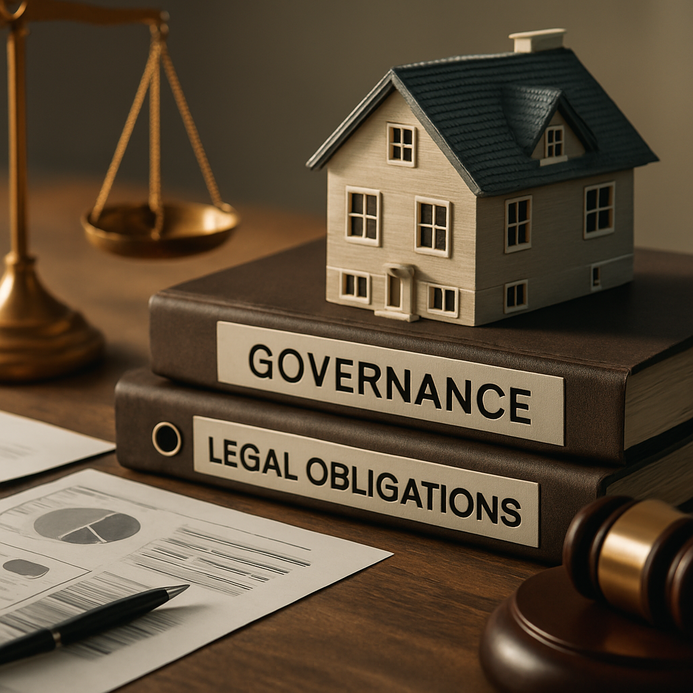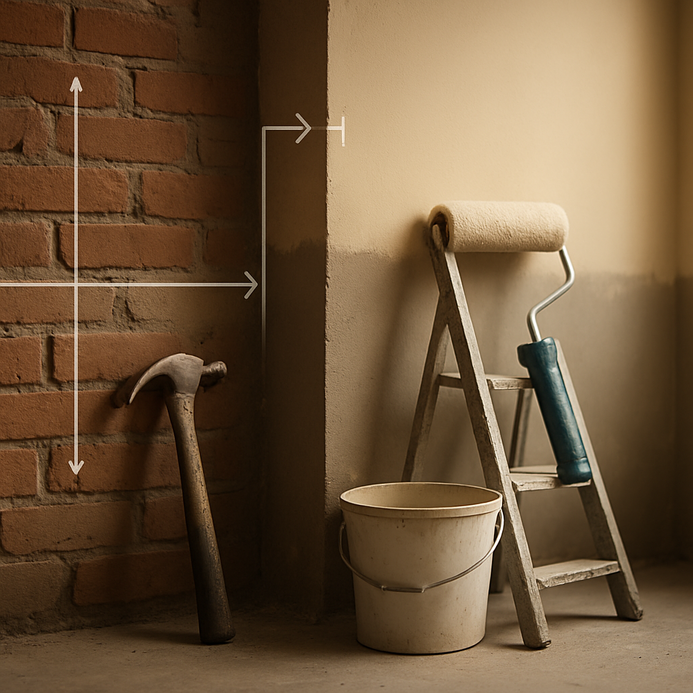How To Read Your Monthly Maintenance Bill: Clear Breakdown!
Introduction to Society Maintenance Bills
So, let’s chat about your monthly maintenance bill. It’s kinda important, right? This bill isn’t just another piece of paper, it’s essential for keeping your home in good shape and liveable. By really diving into it, you can see exactly where your hard-earned cash is going. Usually, it covers everything from common area upkeep to utilities, repairs, and security. Knowing these expenses can really boost your experience as a homeowner.
Typically, a society maintenance bill lays out all the charges in detail, which lets everyone see just how funds are being put to work. Transparency is key; it helps build trust in the community. For instance, it’s useful to know if part of your bill pays for things like landscaping or the cleaners.
When you look at your bill, take a moment to grasp each line. You’ll want to catch anything that doesn’t quite add up. If something seems off, like an unexpected charge for repairs, don’t hesitate to ask management about it. Keeping an eye on your maintenance bill is all about ensuring stability in your homeownership journey.
For more details on maintenance charges, check out this piece on Maintenance Charges: Meaning, Types, and Regulations or have a look at the Guide to Housing Society Maintenance Billing. Knowing these concepts is super helpful for all homeowners.
And hey, don’t forget to manage your payments well. Setting reminders for when to pay can make things smoother for everyone. If you face issues like with the maintenance bill payment, tackle ’em quickly to steer clear of penalties.
Hunger for more info about homeownership? Check out these articles on Renting vs. Buying a Home: Which is Better for You? and First-Time Home Buyer Tips: Financing Made Simple. Taking a closer look at your maintenance bill boosts your awareness and satisfaction as a homeowner.
Decoding the Charges: A Line-by-Line Explanation
Understanding your maintenance bill can feel like a chore, right? But don’t sweat it! Here’s a breakdown of the common charges to clear the fog.
| Charge Type | Description |
|---|---|
| Service Charges | Regular fees for amenities and upkeep, covering cleaning, security, and landscaping. |
| Repair and Maintenance Fees | Costs tied to fixing common areas, like elevators or plumbing issues. |
| Utility Charges | Charges for water and electricity for shared spaces, often shared among residents. |
| Parking Fees | Fees for your designated parking space, usually depending on vehicle size. |
| Special Assessments | One-off fees for big repairs, like roofs or infrastructure upgrades. |
For more tips on managing your expenses, give these articles a look: understanding maintenance charges and maintaining your property value. Knowing your maintenance bill can lead to better financial choices.
Sinking Fund: What It Is and Why You Need It
Okay, so what’s a sinking fund and why does it matter? If you’re in a community like a residential society, this fund is super crucial. It’s a stash of cash saved for future repairs or improvements of shared facilities. This means no one’s left scrambling when an emergency arises.
Purpose of a Sinking Fund
The sinking fund is all about managing those big maintenance expenses before they hit the fan. Think repairs to roofs, elevators, or landscaping. Not having a savings plan in place can make these costs feel unpredictable.
For example, let’s say your society has set aside 10% of the annual maintenance bill for the sinking fund. If your bill is ₹50,000 a month, we’re looking at ₹600,000 a year. That means ₹60,000 goes straight into that sinking fund.
| Expense Type | Estimated Cost | Sinking Fund Allocation |
|---|---|---|
| Roof Replacement | ₹300,000 | ₹30,000 |
| Elevator Repair | ₹150,000 | ₹15,000 |
| Landscaping Renovation | ₹100,000 | ₹10,000 |
| Emergency Repairs | ₹50,000 | ₹5,000 |
| Total | ₹600,000 | ₹60,000 |
So, when those repairs roll around, the fund is there to handle the costs without dropping a huge bill on residents out of nowhere.
Importance in Financial Planning
Having a sinking fund doesn’t just help with unexpected costs; it also lets you budget better. Each resident chips in, usually through the monthly bill. Grasping how your bill shakes out is important. For deeper insights into maintenance-related expenses, you might want to check out Maintenance Expenses Overview, Maintenance Charges Explained, and Creating Maintenance Bill Formats.
For a bit more guidance, look into our articles about improving your neighborhood and navigating property tax online.
Repair and Maintenance Funds: Keeping Your Society Safe and Functioning
Repair and maintenance funds play a big role in keeping all those shared spaces safe and nice in residential societies. These funds cover repairs and regular maintenance, making sure everyone feels good about living there. Here’s a breakdown of what it all means.
Understanding the Maintenance Bill
A typical maintenance bill includes charges for stuff that keeps community living afloat. Each item should be clearly listed to help residents see how their contributions are being spent. Here’s how a typical bill might look:
| Item | Description | Estimated Cost |
|---|---|---|
| General Maintenance | Fixing and cleaning common areas | $100 |
| Landscaping | Routine care for lawns and gardens | $50 |
| Security Services | Fees for security staff maintaining safety | $75 |
| Utility Charges | Water and electricity for shared areas | $90 |
| Repair Fund Contributions | Money set aside for ongoing repairs and emergencies | $60 |
| Miscellaneous Expenses | Unexpected costs that might pop up | $25 |
| Total | $490 |
Those line items show how your maintenance bill helps keep everything running smoothly. Without adequate funds, delays in crucial repairs could turn simple fixes into major headaches.
Importance of Repair Funds
Setting aside money as a repair fund means the society can quickly address maintenance needs as they come up. This proactive approach stops little problems from blowing up into costly fixes. Like if a minor leak is ignored, it could lead to bigger issues down the line.
Plus, lots of societies set up a repair fund for long-term plans, like upgrading amenities or installing energy-efficient features. Investing in these improvements not only makes living conditions better but can also boost property values.
Best Practices for Maintenance Bill Management
Clear communication about the maintenance bill is vital for resident happiness. Using the maintenance charges breakdown can help residents understand where their money’s going. Holding regular meetings can promote transparency and tackle any concerns about costs.
In India, the society maintenance bill format highlights the importance of keeping everything clear. This helps residents make informed decisions about their contributions.
By comprehending the need for repair funds and maintaining transparent billing practices, residents can keep their community a safe and enjoyable place to call home.
Looking for more info? Check out our articles on buying vs renting or tips for new buyers.
Getting the hang of the shared costs on your maintenance bill is pretty key to understanding community living. Common area utilities, stuff like water, electricity, and maintenance services, play a huge role in what you pay.
| Utility Type | Typical Charges | Description |
|---|---|---|
| Electricity | ₹2,000 – ₹5,000 | Fees based on usage for shared spaces. |
| Water Supply | ₹1,000 – ₹3,000 | Charges based on consumption in shared facilities. |
| Cleaning & Maintenance | ₹1,500 – ₹4,000 | Costs for keeping communal areas clean and tidy. |
| Security Services | ₹2,000 – ₹6,000 | Salary for security staff in your complex. |
| Repairs & Maintenance | ₹1,500 – ₹3,500 | General upkeep and repair services needed. |
Regular expenses like these usually pop up on your maintenance bill, helping ensure there’s accountability. If you’re in a society, your ashiana maintenance bill payment will include these utility charges.
To truly understand your maintenance bill, look for sections that break down each charge. Formats can vary, so getting familiar with standard society maintenance bill formats really helps. Also, checking into areas like the specifics of maintenance charges that apply to housing societies can clarify what to expect.
Getting your head around the maintenance bill doesn’t just promote transparency; it also fosters better conversations among residents about shared costs and potential improvements. Looking for more info? Explore our pieces on carpet vs. built-up area or gated communities and shared amenities.
FAQ
What is a society maintenance bill?
A society maintenance bill is a document that outlines the expenses associated with maintaining shared facilities in residential societies, including costs for utilities, repairs, and services.
How are maintenance charges calculated?
Maintenance charges are generally calculated based on the total budget of the society, which includes expenses for cleaning, security, repairs, and utilities, divided among residents.
What is a sinking fund?
A sinking fund is a savings account set up by residential societies to cover future repair costs and improvements, helping to avoid sudden large expenses for residents.
Why are repair funds important?
Repair funds are essential for managing maintenance needs proactively, addressing issues before they escalate into larger, expensive repairs, ensuring the community remains safe and functional.
How can I manage my maintenance bill payments effectively?
Setting reminders for payment due dates, keeping track of expenses, and regularly reviewing your maintenance bill can help manage payments effectively.













